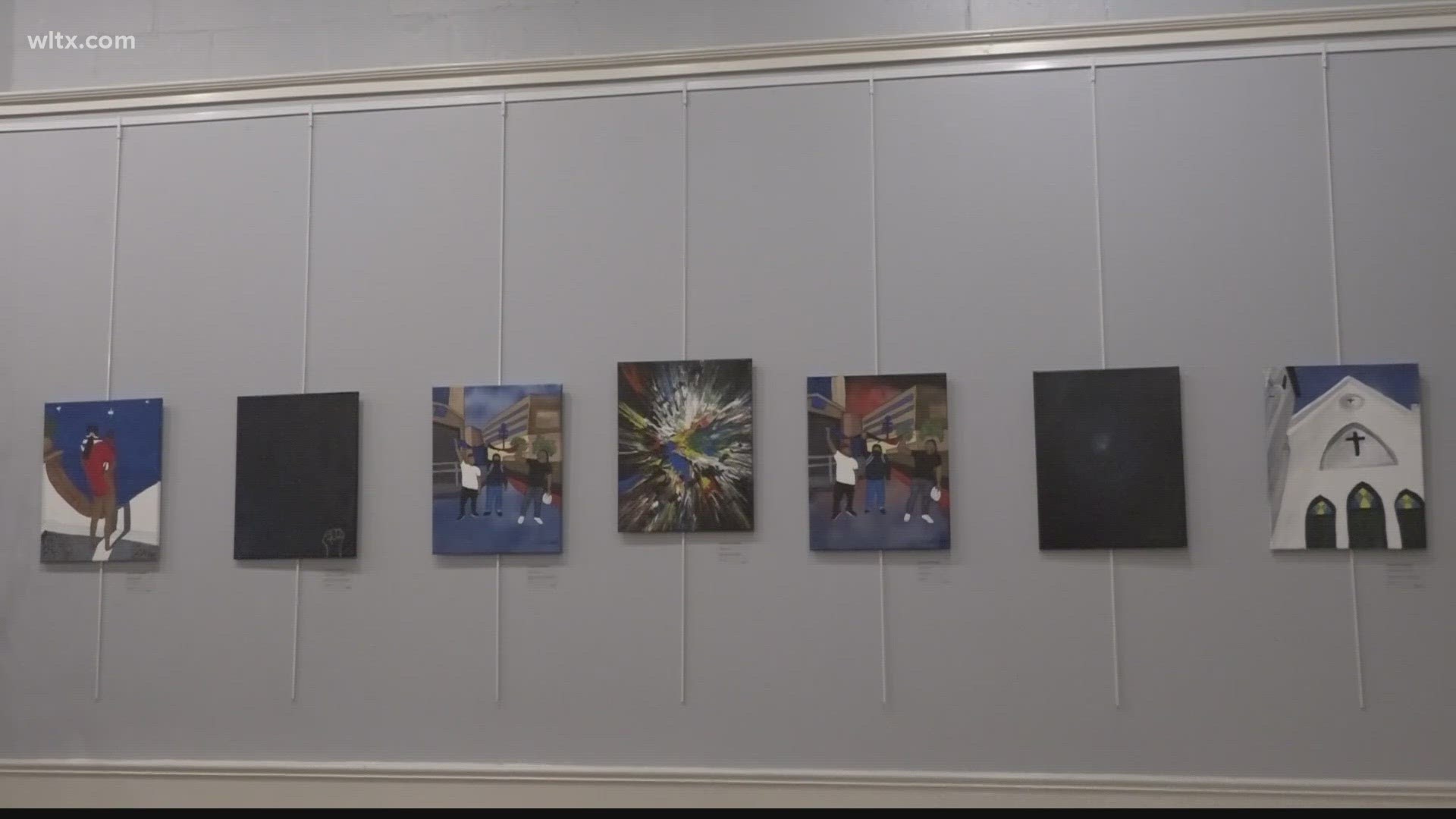ORANGEBURG COUNTY, S.C. — The Creative Connectors: The Rural Experience Exhibition at the Orangeburg County Fine Arts Center is uniting the work of artists throughout rural South Carolina.
“Unlike artists in the major cities, nobody really pays attention to the rural cities," said artist Terrance Washington.
Blackville-based artist Terrance Washington birthed the concept of the exhibit. His work highlights a moment of unrest in Columbia when there was a year of protests challenging police brutality in the wake of George Floyd.
“Right down on Gervais and Main Street, all the way down to the tunnel down there, off Gervais Street, a lot of the places were getting burned and catching on fire, so I decided to create that," said Washington, "It was just said all the police brutality and all the violence. I wanted to do something to document that.”
From Columbia to Orangeburg, Newberry based artist Robert Matheson used artificial intelligence in his art to educate about The Surrender of Orangeburg, a Revolutionary War battle.
“South Carolina and this area had such a strong role to play and I wanted to learn more about that and so those combining how can I use this technology to tell this story and learn while I’m doing it," said artist Robert Matheson.
With the help of AI, he used what's called text prompting to describe the scenes he wanted to interpret for his art. These scenes were actual re-enactments pulled from a soldier's historical account of events.
“There’s so much rich history in South Carolina and the culture that’s developed out of it so I’m hoping they can they can tap in to that a little bit and maybe do their own research and tell some of their own stories," said Matheson.
Other artists featured include Ian Thomas Dillinger, from Colleton County, James E. Wilson, III, from Bamberg County, Robert Matheson, from Newberry County. Ernest Lee is from Richland County. Rajasekhar Yarraguntla teaches in Barnwell County.
Creative Connectors: The Rural Experiences, as an exhibition, is supported and has been encouraged by the South Carolina Arts Commission. The program is funded in part by grants from USDA Rural Development as well as from a Neighborworks America grant won by the Center for a Better South.
The exhibit is on display at the center through April 21. It is free and open to the public.

